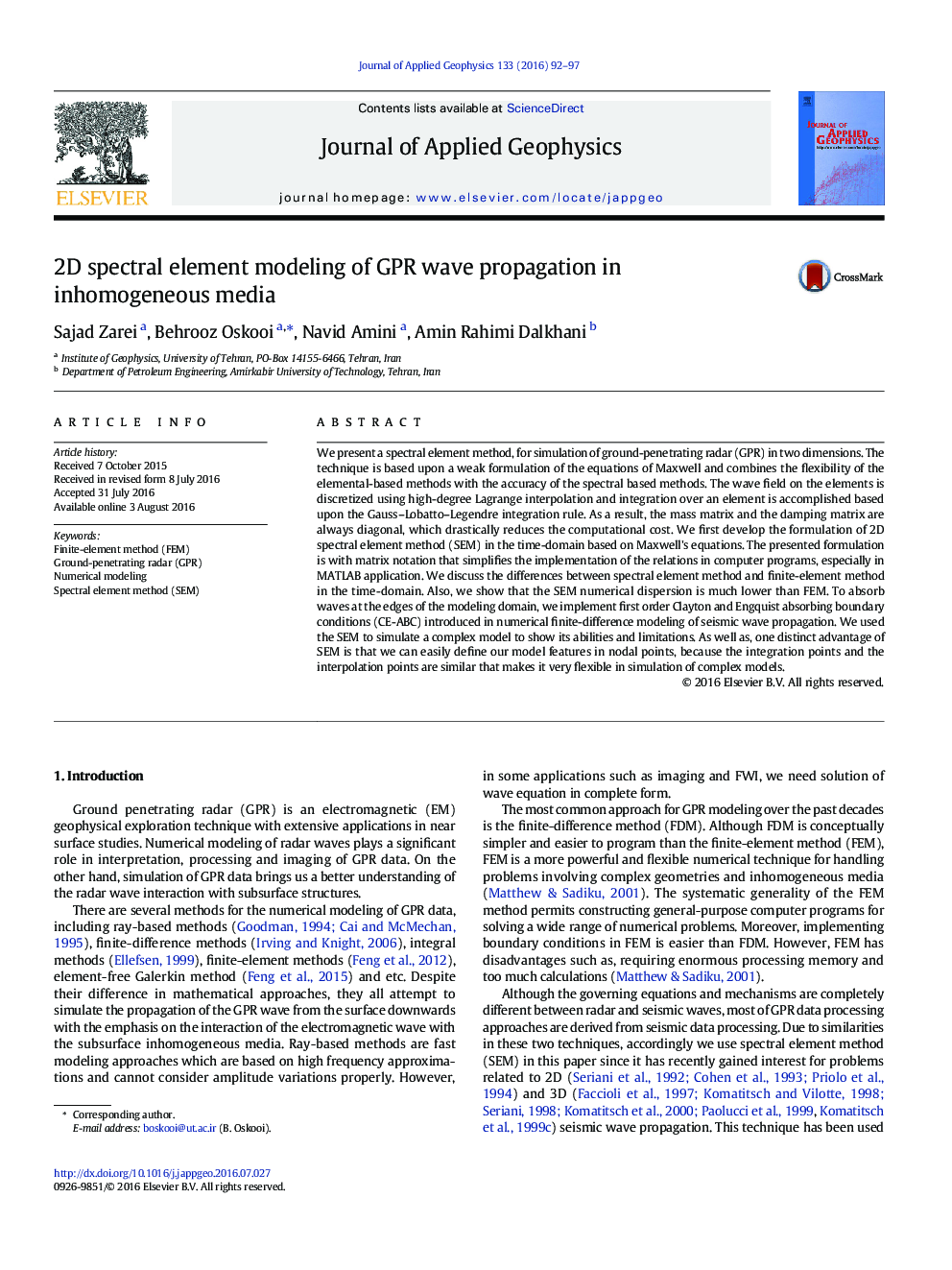| کد مقاله | کد نشریه | سال انتشار | مقاله انگلیسی | نسخه تمام متن |
|---|---|---|---|---|
| 4739758 | 1641118 | 2016 | 6 صفحه PDF | دانلود رایگان |
• We use spectral-element method (SEM) as an innovative numerical technique to simulate the GPR data for the first time.
• Advantages versus the finite-element method are short calculation time, low processing memory and less numerical dispersion.
• Identical integration and interpolation points in SEM makes the simulation of complex models very flexible and powerful.
We present a spectral element method, for simulation of ground-penetrating radar (GPR) in two dimensions. The technique is based upon a weak formulation of the equations of Maxwell and combines the flexibility of the elemental-based methods with the accuracy of the spectral based methods. The wave field on the elements is discretized using high-degree Lagrange interpolation and integration over an element is accomplished based upon the Gauss–Lobatto–Legendre integration rule. As a result, the mass matrix and the damping matrix are always diagonal, which drastically reduces the computational cost. We first develop the formulation of 2D spectral element method (SEM) in the time-domain based on Maxwell's equations. The presented formulation is with matrix notation that simplifies the implementation of the relations in computer programs, especially in MATLAB application. We discuss the differences between spectral element method and finite-element method in the time-domain. Also, we show that the SEM numerical dispersion is much lower than FEM. To absorb waves at the edges of the modeling domain, we implement first order Clayton and Engquist absorbing boundary conditions (CE-ABC) introduced in numerical finite-difference modeling of seismic wave propagation. We used the SEM to simulate a complex model to show its abilities and limitations. As well as, one distinct advantage of SEM is that we can easily define our model features in nodal points, because the integration points and the interpolation points are similar that makes it very flexible in simulation of complex models.
Journal: Journal of Applied Geophysics - Volume 133, October 2016, Pages 92–97
